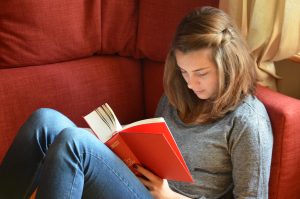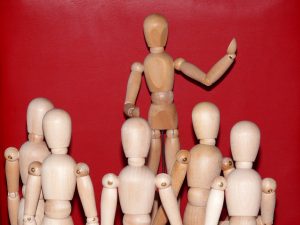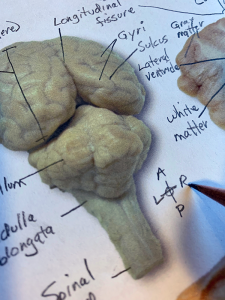The Last Best Story in Teaching Anatomy & Physiology | Episode 37
Release Date: 02/11/2019
 Pulse of Progress: Looking Back, Moving Forward | TAPP 147
Pulse of Progress: Looking Back, Moving Forward | TAPP 147
The A&P Professor
In Episode 147, host Kevin Patton reviews the highlights and events of the previous year in the world of The A&P Professor. He then turns to last year's predictions for teaching human anatomy and physiology to see if he was on the right track. Finally, predictions for the coming year are revealed. And lots of other stuff—this episode is two hours long, after all! 0:00:00 | Introduction 0:00:50 | Debrief: Topics, Stats, Reflections 0:21:28 | A Long, Long, Long Episode 0:23:05 | Debrief: More Reviewing & Reflecting 0:38:59 | Did I Get My Predictions Right? 0:50:22 | Textbook &...
info_outline Anatomy of Trust: Promoting Integrity in A&P Education | Winter Shorts | TAPP 146
Anatomy of Trust: Promoting Integrity in A&P Education | Winter Shorts | TAPP 146
The A&P Professor
Episode 146 of The A&P Professor podcast is one of our winter shorts, where I replay interesting segments from previous episodes. In this one, we discuss the importance of academic integrity in the Anatomy & Physiology course. We emphasize the need to incorporate discussions about integrity in the syllabus and course materials and share real-life examples of violations in the healthcare field. We highlight how dishonesty can have serious consequences and discuss strategies for prevention, such as using multiple test versions and unique topics for papers/projects. Providing examples of...
info_outline A Tongue Twister's Guide to Mastering Anatomy Pronunciation | Winter Shorts | TAPP 145
A Tongue Twister's Guide to Mastering Anatomy Pronunciation | Winter Shorts | TAPP 145
The A&P Professor
Episode 145 of The A&P Professor podcast is one of our winter shorts, where I replay interesting segments from previous episodes. In this one, you'll hear about the trials and tribulations of teaching and learning pronunciations of anatomy and physiology terminology. Including why the instructor is ALWAYS correct! 00:00 | Introduction 01:07 | Variations in Anatomy & Physiology Pronunciations 10:24 | Say Anatomy & Physiology Terms Out Loud 20:30 | Staying Connected ★ If you cannot see or activate the audio player, go to: 🏅 Apply for your credential (badge/certificate)...
info_outline Dissecting the Kenhub Atlas: Insights from Editor Mike Pascoe | TAPP 144
Dissecting the Kenhub Atlas: Insights from Editor Mike Pascoe | TAPP 144
The A&P Professor
Mike Pascoe joins host Kevin Patton in Episode 144 to chat about Mike's experience in editing the new Kenhub Atlas of Human Anatomy. We go behind the scenes to see how this new kind of anatomy atlas was developed. Let's see how those decisions get made and how the learning perspective gets incorporated into anatomy manuals. And we explore diverse representation in anatomy images and why we won't find any eponyms in this atlas. We also have a brief remembrance of our friend David Allard. 00:00 | Introduction 00:45 | Remembering David Allard 04:25 | Introducing Mike Pascoe 06:12 |...
info_outline The One Teaching Strategy That Will Fix Your Anatomy & Physiology Course | TAPP 143
The One Teaching Strategy That Will Fix Your Anatomy & Physiology Course | TAPP 143
The A&P Professor
In episode 143 of The A&P Professor podcast for anatomy and physiology faculty, host Kevin Patton uncovers the super-secret, single, ultimate teaching strategy you need to keep your course tuned up and effective. He also revisits the "out there" transducer model of the brain and suggests a connection with a recent discovery supporting quantum wave activity in brain cell microtubules. Yes, quantum waves in the microtubules. Kevin also clarifies and expands on those wacky "extra" courses he described in Episodes 140 and 141. 00:00 | Introduction 00:51 | Clarifying Kevin's Wacky Supplemental...
info_outline Muscle: A Gripping Story by Roy Meals | TAPP 142
Muscle: A Gripping Story by Roy Meals | TAPP 142
The A&P Professor
Get pumped up for Episode 142, where we have the honor of hosting Dr. Roy Meals, the musculoskeletal maestro! 💪 We're gonna flex our curiosity muscles and explore every nook and cranny of his latest masterpiece, Muscle: The Gripping Story of Strength and Movement. This episode's so dynamic, you might need a protein shake afterward! 0:00:00 | Introduction 0:01:13 | Re-Introducing Dr. Roy Meals 0:04:08 | Muscle Strain & Why We Train 0:13:53 | What Sword Swallowing Teaches Us About Muscle 0:24:49 | Muscle Stories: Learning Should Be Fun 0:38:48 | Staying Connected...
info_outline Study Courses Supercharge Anatomy & Physiology Success | TAPP 141
Study Courses Supercharge Anatomy & Physiology Success | TAPP 141
The A&P Professor
Get ready for a mind-bending 😲 rendezvous with Kevin Patton in Episode 141, where he continues to spill the beans on his top-secret recipe for student triumph. 🏆 Brace yourself for this next adventure on his whirlwind tour of revolutionizing A&P 1 education, as we dissect the art of identifying student pain points, personalizing preparation, and serving up the kind of mentorship they've been yearning for! 0:00:00 | Introduction 0:00:45 | One of Two Success Courses 0:09:48 | Setting Up the Supplement Course 0:18:44 | Structure of Class Sessions 0:40:17 |...
info_outline Pre-A&P: A Refresher for Student Success in Anatomy & Physiology | TAPP 140
Pre-A&P: A Refresher for Student Success in Anatomy & Physiology | TAPP 140
The A&P Professor
In episode 140, we introduce the development of the pre-A&P course and the A&P1 Supplement course. These courses address the challenges faced by A&P students and improve their readiness and comprehension. In this first of two episodes, we focus on the pre-A&P course. It focuses on filling subject knowledge gaps with 10 modules and cumulative tests. Student surveys and studies show its effectiveness in achieving higher grades in the A&P 1 course. Implementing these nontraditional courses requires collaboration and support from advisors and faculty members. Together, we...
info_outline Thinking New Thoughts about the Human Brain | TAPP 139
Thinking New Thoughts about the Human Brain | TAPP 139
The A&P Professor
In Episode 139, we explore a new discovery in nerve signaling in the brain called a dendritic action potential (dCaAP), we look at a whacky proposed model of brain function, and we share some ideas about how we can help our students understand the core concepts of chemical signaling and signal transduction in different contexts. Put on your thinking caps and jump into this fresh episode now. 00:00 | Introduction 00:50 | Dendritic Action Potentials 12:16 | Transducer Model of the Brain 21:43 | Chemical Signals & Signal Transduction 35:09 | Staying Connected ★ If you cannot see or...
info_outline Dancing Organelles, AI Resources, Distracting Animations, Timed Tests & Micro-credentials | TAPP 138
Dancing Organelles, AI Resources, Distracting Animations, Timed Tests & Micro-credentials | TAPP 138
The A&P Professor
In Episode 138 of The A&P Professor podcast for anatomy & physiology faculty, host Kevin Patton discusses some new thinking about organelle function, why decorative animations are not a good idea in our teaching slides, news about Wendy Riggs and the 2023 HAPS President's Medal, why I don't like timed tests, resources for AI in the curriculum, and why micro-credentials are our friends. With all that, how is that we left out any mention of carbaminohemoglobin? 00:00 | Introduction 00:50 | Wendy Riggs Wins Big 04:173 | Curricular Resources for AI 08:55 | Timed Online Tests 24:12 |...
info_outlineHost Kevin Patton emphasizes the idea of the "last best story" in science to review the unfolding debates about adult neurogenesis and autonomic pathways. How can we use the "anatomical compass" to help students learn anatomy? What is reserve hematopoiesis? And more discussion of feedback to students in online tests.
01:17 | Feedback in Online Tests
08:17 | The Anatomical Compass
14:47 | Sponsored by AAA
15:12 | Reserve hematopoiesis
18:09 | Sponsored by HAPS
18:54 | Featured: Last Best Story in Adult Neurogenesis & ANS Pathways
If you cannot see or activate the audio player click here.
Questions & Feedback: 1-833-LION-DEN (1-833-546-6336)
Follow The A&P Professor on Twitter, Facebook, Blogger, Nuzzel, Tumblr, or Instagram!
Scientific theories are tested every time someone makes an observation or conducts an experiment, so it is misleading to think of science as an edifice, built on foundations. Rather, scientific knowledge is more like a web. The difference couldn’t be more crucial. A tall edifice can collapse – if the foundations upon which it was built turn out to be shaky. But a web can be torn in several parts without causing the collapse of the whole. The damaged threads can be patiently replaced and re-connected with the rest – and the whole web can become stronger, and more intricate. (Massimo Pigliucci)
1 | Feedback in Online tests
7 minutes
In Episode 36, Adam Rich called in regarding how we can provide feedback to students taking online tests. I responded that I encourage students to get the correct response from their study buddies—or from me. After the episode aired, Krista Rompolski pointed out that this could be a challenge in very large courses. What do y'all think? Tell us. Really.
- Big Year in Anatomy & Physiology Teaching with The A&P Professor | Episode 36
- Here's a tool I use for repeated feedback (saves a LOT of time):
- Sign up for TextExpander. Recall your best words. Instantly, repeatedly.
- We want your feedback!
- 1-833-LION-DEN or 1-833-546-6336
- [email protected]
- @theAPprofessor (Facebook, Twitter, Instagram, Pinterest, and beyond)
2 | The Anatomical Compass
6.5 minutes
Although you and I are comfortable in orienting ourselves to anatomical directions when looking at diagrams, photographs, and specimens in anatomy, our beginning student often are not. The simple process of adding an "anatomical rosette" reflecting the anatomical directions in each encountered diagram can help students develop the skill of understanding anatomical perspective.
3 | Sponsored by AAA
0.5 minutes
The searchable transcript for this episode, as well as the captioned audiogram of this episode, are sponsored by The American Association of Anatomists (AAA) at anatomy.org. Their big meeting is in April at the Experimental Biology (EB) meeting in Orlando FL. Check it out!
4 | Reserve Hematopoiesis
3 minutes
Hematopoietic stem cells (HSCs) may have a "back-up system" that helps out after damage to the working population. These "reserve" HSCs (rHSCs) may step up when the primed HSCs (pHSCs) cannot keep up with the demand for hematopoiesis.
- Scientists have identified a bone marrow backup system (summary article) my-ap.us/2BmcoE0
- N-Cadherin-Expressing Bone and Marrow Stromal Progenitor Cells Maintain Reserve Hematopoietic Stem Cells
(report by Zhao, et al. in Cell Reports) my-ap.us/2Bk7vLN
5 | Sponsored by HAPS
0.5 minutes
The Human Anatomy & Physiology Society (HAPS) is a sponsor of this podcast. Did you know there's a one-day regional HAPS conference in March? Check it out. You can help appreciate their support by clicking the link below and checking out the many resources and benefits found there.
6 | Featured: Last Best Story in Adult Neurogenesis & ANS Pathways
12 minutes
The "last best story" is what I tell my students I'm providing to them. That approach emphasizes the evolving nature of scientific understanding. In this episode, I mention two stories that are evolving right now.
- Storytelling is the Heart of Teaching A&P | Episode 12 (where I introduce the idea of teaching as storytelling)
- Adult neurogenesis in the brain
- Running Concept Lists Help Students Make Connections | Episode 8 (where I first discuss this story)
- The Discovery of the Neuron (outlines the origin of central dogmas about neuroscience, including Ramón y Cajal's role)
- Neurogenesis in the adult human hippocampus (paper that established the idea that adult brain neurogenesis does occur)
- Human hippocampal neurogenesis drops sharply in children to undetectable levels in adults (paper that challenges the idea of adult brain neurogenesis)
- New Study Questions Confidence in Neurogenesis in the Adult Brain (article that summarizes the recent controversy)
- Are Learning Styles Real? Why or Why Not? | Episode 14 (where I bring up newer research on adult neurogenesis)
- New Evidence Suggests Aging Brains Continue to Make New Neurons (article by Francis Collins on the new paper)
- Human Hippocampal Neurogenesis Persists throughout Aging (new research paper in Cell)
- The last best story in adult neurogenesis?
- A New Look at Neurogenesis in Humans (blog post by Neuroskeptic, summarizing new perspectives) my-ap.us/2TDxTXU
- Recalibrating the Relevance of Adult Neurogenesis (article by Jason S. Snyder in Trends in Neurosciences) my-ap.us/2TEb5r4
- Running Concept Lists Help Students Make Connections | Episode 8 (where I first discuss this story)
- Are sacral autonomic pathways sympathetic or parasympathetic?
- Sacral Efferent Pathways are Sympathetic, Not Parasympathetic (summary from The A&P Professor blog) my-ap.us/2TJMHnS
- The sacral autonomic outflow is sympathetic (I. Espinosa-Medina, O., et al., of J.-F. Brunet lab's in Science the proposed change; includes an updated version of the classic diagram of sympathetic and parasympathetic pathways) my-ap.us/2fNdcF3
- Neural circuitry gets rewired (Adameyko, I. in Science comments on the report cited above, stating that "This finding provokes a serious shift in textbook knowledge, and, as with any fundamental discovery, it brings important practical implications..." and goes on to mention of a few of the implications (e.g., how to treat bladder dysfunction) my-ap.us/2gg9O8P
- The Autonomic Nervous System. Part I. (John Newport Langley's classic "primary source" that codified the modern concept of the ANS.) my-ap.us/2fYHt3M
- The sacral autonomic outflow is parasympathetic: Langley got it right (John P. Horn's commentary in Clinical Autonomic Research; the last best story?) my-ap.us/2TCvwF5
- Sacral Efferent Pathways are Sympathetic, Not Parasympathetic (summary from The A&P Professor blog) my-ap.us/2TJMHnS

If the hyperlinks here are not active, go to TAPPradio.org to find the episode page.
- More details at the episode page.
- Transcript available at the script page.
- Listen to any episode on your Alexa device.
- Join The A&P Professor social network:
- Blog
- Twitter @theAPprofessor
- Facebook theAPprofessor
- Instagram theAPprofessor
- YouTube
Amazon and TextExpander referrals help defray podcasting expenses.
Transcript and captions for this episodeare supported by the
American Association of Anatomists.
anatomy.org
The Human Anatomy & Physiology Society
also provides support for this podcast.
theAPprofessor.org/haps
(Clicking on sponsor links helps let them know you appreciate
their support of this podcast!)





